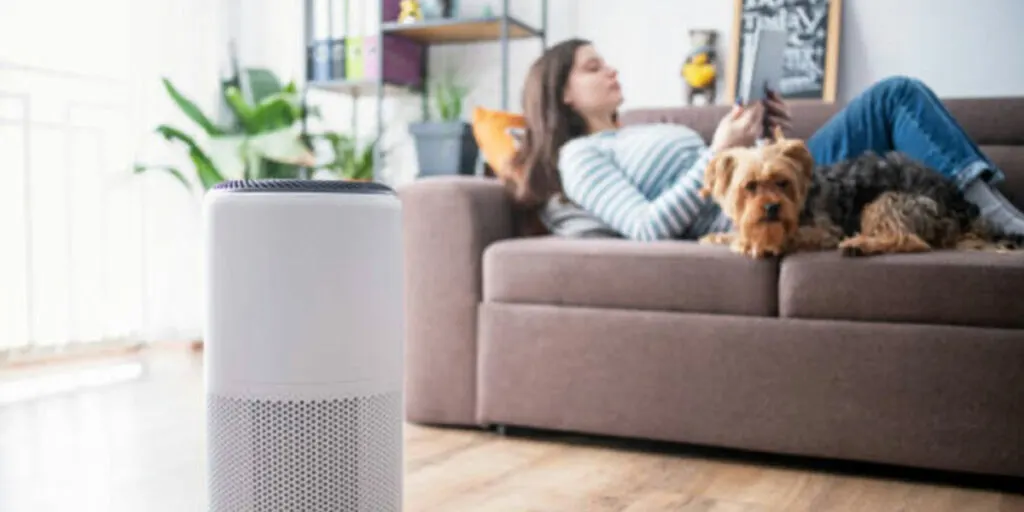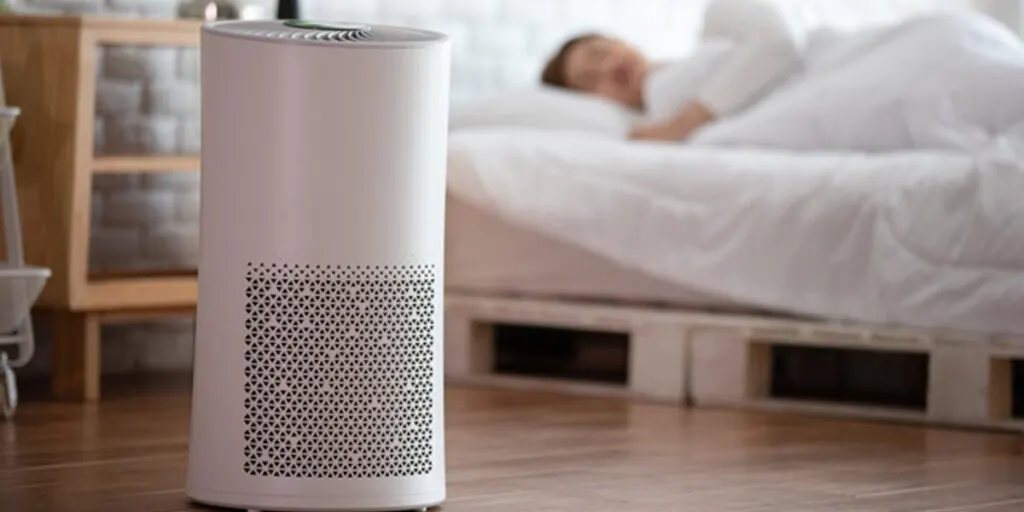In the sanctuary of our homes, we seek comfort and safety. But have you ever considered the invisible invaders that might be sharing your space? Surprisingly, indoor air can often be more polluted than the air outside, filled with unseen elements that can impact our health.

But don’t worry, achieving better indoor air quality isn’t a daunting task. With a few simple changes, you can breathe easier and healthier. Ready to embark on this journey towards cleaner air? Let’s explore how to enhance your indoor air quality, making your home the healthy haven it should be.
Understanding Indoor Air Quality
When we think about air quality, our minds often drift to images of smoggy cityscapes or industrial smokestacks. However, the air quality within our homes is just as crucial, if not more so. Indoor air quality refers to the air quality within and around buildings and structures, especially as it relates to the health and comfort of building occupants. It’s a vital aspect of our lives that often goes unnoticed.
The common indoor air pollutants include dust, pollen, pet dander, mold spores, and volatile organic compounds (VOCs) from household products. These pollutants can originate from various sources, such as furniture, carpets, building materials, cleaning products, or even outdoor air entering the house.
Poor indoor air quality can lead to a host of health issues, particularly respiratory problems. Symptoms can range from minor irritations like coughing and sneezing to more severe conditions such as asthma and even lung disease. It’s clear that maintaining good indoor air quality is not just about comfort—it’s about health.
Practical Steps to Improve Indoor Air Quality and Combat Air Pollutants
Improving indoor air quality is a multi-faceted process that involves several strategies. Here are some practical steps you can take to ensure the air in your home is as clean and healthy as possible.
Source Control
Source control is the first and most effective line of defense in improving indoor air quality. This involves identifying and managing the sources of pollutants in your home. Here are some ways to do this:
- Avoid smoking indoors: Tobacco smoke can contribute to poor indoor air quality and can cause health problems.
- Choose household products carefully: Many cleaning products, paints, and adhesives can release harmful pollutants. Look for low-VOC or green alternatives.
- Manage pests: Cockroaches, mice, and other pests can contribute to poor indoor air quality. Use pest management strategies that minimize the use of pesticides.
To better understand how to control the sources of indoor pollutants, let’s take a look at the table below. It outlines some common sources, the type of pollutants they emit, and suggested control methods.
| Source of Pollutants | Type of Pollutant | Control Method |
|---|---|---|
| Tobacco Smoke | Particulate Matter, VOCs | Avoid smoking indoors |
| Cleaning Products | VOCs | Choose low-VOC or green alternatives |
| Pests | Allergens | Use pest management strategies |
Improve Ventilation
Improving ventilation can help to remove or dilute indoor airborne pollutants. Here’s how you can enhance ventilation in your home:
- Open windows and doors: This is one of the simplest ways to improve ventilation, especially when the weather is nice.
- Use exhaust fans: Install and use exhaust fans in your kitchen and bathroom to remove pollutants directly at the source.
- Consider a mechanical ventilation system: These systems use fans and ductwork to remove indoor air and replace it with filtered outdoor air.
Air Cleaning
Air cleaning can be a useful addition to source control and ventilation. Here are some air cleaning strategies:
- Use air purifiers: These devices can help to remove certain pollutants from the air. Choose a purifier that is designed to remove the specific pollutants you are concerned about.
- Regularly replace filters: If you use an HVAC system or an air purifier, make sure to replace the filters as recommended by the manufacturer.
The table below provides a comparison of different types of air cleaners, their effectiveness, and when they are best used.
| Type of Air Cleaner | Effectiveness | Best Use Case |
|---|---|---|
| Air Purifiers | High for small particles, low for gases | Rooms with high dust or allergen levels |
| HVAC Filters | Varies, high for HEPA filters | Whole-house air cleaning |
| Ionizers | Low to moderate | Rooms with high dust levels |
Regular Maintenance and Cleaning
Regular maintenance and cleaning can also contribute to better indoor air quality. Here’s what you can do:
- Clean regularly: Regular cleaning can help to reduce dust and pet dander in your home.
- Maintain your HVAC system: Regular maintenance of your HVAC system can help it operate more efficiently and improve your home’s indoor air quality.
By implementing these practical steps, you can significantly improve the quality of your indoor air, making your home a healthier place to live.
The Role of Improving Ventilation
Ventilation plays a pivotal role in maintaining good indoor air quality. It helps to remove or dilute indoor airborne pollutants coming from indoor sources. This reduces the level of contaminants and improves indoor air quality.
Improving ventilation can be as simple as opening windows to let fresh air in, or it can involve more complex solutions like installing a mechanical ventilation system. Using exhaust fans in your kitchen and bathroom can also help to remove pollutants directly at the source and prevent them from spreading throughout the house.
Outdoor Air vs Indoor Air: The Ventilation Perspective
While outdoor air can contain pollutants, it’s generally cleaner than indoor air. This is because outdoor air pollutants are more dispersed and less concentrated than indoor pollutants. Therefore, bringing in fresh outdoor air can help to reduce the concentration of indoor pollutants.
However, it’s important to note that the quality of the outdoor air matters. If you live in a highly polluted city, you might need to use air purifiers or filters to clean the incoming air.
Air Filters and Air Purifiers: Your Allies in Achieving Better Air
The Power of Air Filters
Air filters work by trapping pollutants in a mesh of fibers. They can be highly effective at improving indoor air quality, especially for larger particles like dust and pollen.
There are various types of filters available, each with its own strengths and weaknesses. For instance, High Efficiency Particulate Air (HEPA) filters can capture 99.97% of particles that are 0.3 microns in diameter, making them highly effective against most common indoor pollutants.
Use an Air Purifier: Pros and Cons

Air purifiers can also be a valuable tool in improving indoor atmosphere quality. They work by forcing air through filters that capture pollutants. Some air purifiers also use methods like ionization to attract particles.
When choosing an air purifier, consider factors such as its clean air delivery rate (CADR), the size of the space you need to purify, and the specific types of pollutants you want to remove.
The Impact of Indoor Plants on Indoor Air Quality
Indoor plants can do more than just beautify your home, they can also improve your indoor air quality. Plants absorb gases through their leaves, including some pollutants.
Some of the best indoor plants for air purification include the spider plant, English ivy, and snake plant. However, while plants can contribute to better indoor air quality, they should be used in conjunction with other methods, not as a standalone solution.
The Significance of Clean Air Ducts
Air ducts, the pathways for your heating, ventilation, and conditioning (HVAC) system, can collect dust, pet dander, and other pollutants over time. These pollutants can then be circulated throughout your home, impacting your indoor air quality.
Regular cleaning and maintenance of your ducts can help to ensure they don’t contribute to indoor pollution. This might involve vacuuming out ducts or having a professional duct cleaning service performed.
This will help to improve the air quality in your home and prolong the life of your HVAC system. Cleaning the ducts in the system is important too; DUCTZ Air Duct Cleaning can help you with that.
Conclusion: Towards Better Indoor Air Quality
In conclusion, improved air quality is an achievable goal that can lead to a better health and well-being. By understanding the sources of indoor air pollution and taking steps to reduce these pollutants, we can all breathe a little easier. Whether it’s through improving ventilation, using air filters and purifiers, or simply keeping our living spaces clean, every step brings us closer to the goal of cleaner, healthier air.
Frequently Asked Questions
What are three fundamental approaches to enhance the quality of air inside our homes?
The trio of fundamental approaches to enhance the quality of the atmosphere inside our homes includes controlling the source of pollutants, increasing ventilation, and using devices to clean the environment. Controlling the source involves reducing or eliminating the origins of pollutants, such as opting for low-VOC paints or ensuring gas stoves are well-ventilated. Increasing ventilation helps dilute pollutants by introducing fresh outdoor atmosphere, which can be achieved by simply opening windows or using mechanical ventilation systems. Cleaning the environment involves the use of purifiers or filters to remove pollutants.
What is the most successful strategy for enhancing the quality of air inside our homes?
The most successful strategy for enhancing the quality of the atmosphere inside our homes is typically controlling the source of pollutants. This strategy involves identifying and eliminating the origins of pollutants, or reducing their emissions. This can be more cost-effective than trying to remove pollutants once they have been dispersed throughout your home. For instance, if a particular household product is causing pollution, it’s more effective to stop using that product or to ensure it’s used in a well-ventilated area, rather than trying to clean the polluted atmosphere afterwards.
How can we address issues related to the quality of the atmosphere inside our homes?
We can address issues related to the quality of the atmosphere inside our homes by implementing a combination of strategies including source control, increased ventilation, and environmental cleaning. It’s also important to maintain a clean living environment, as dust and pet dander can contribute to poor quality. Regular maintenance of heating, ventilation, and air conditioning systems can also help to ensure they are not contributing to indoor pollution. In some cases, professional help may be required to identify and mitigate serious issues related to the quality of the atmosphere inside our homes.

Edward Gossin
Tuesday 7th of February 2023
Putting plants is one way to lighten up your rooms, it always shows the personality of the owner of the room too
Van Jackson
Wednesday 1st of February 2023
Can you recommend a good brand for vacuums?